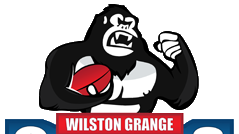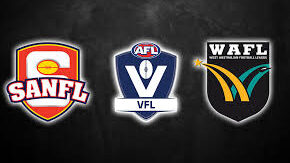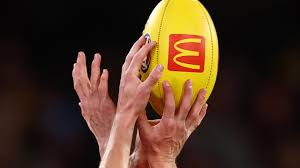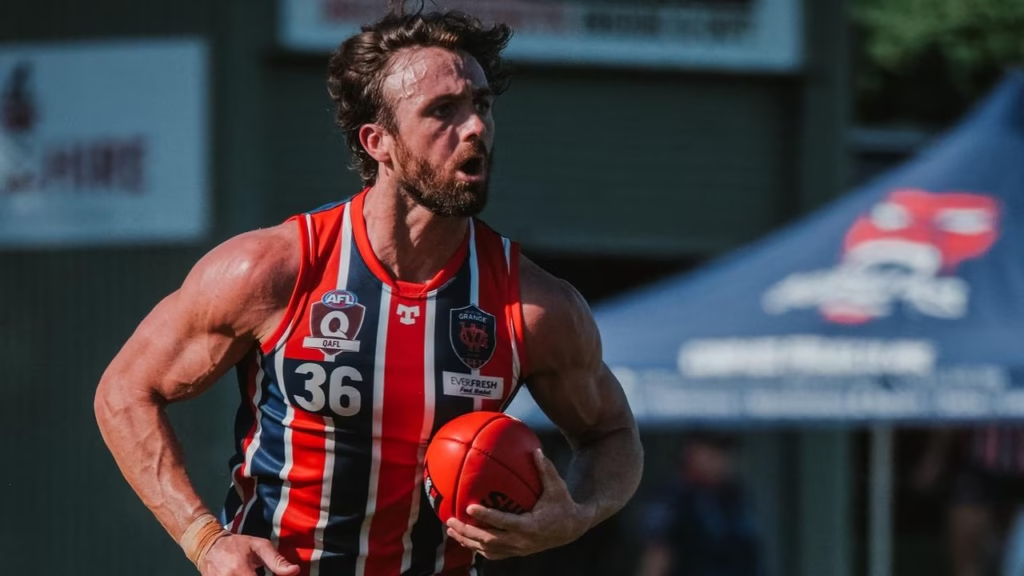What Fans Should Know: The Rules, Players and Sanctions of AFL’s Anti-Doping System
October 30, 2025

Doping in sport can feel distant — something that happens in laboratories and hearings far from the grandstands. But for AFL fans, understanding how the anti-doping system works helps put every headline, ban, or appeal into context (AFL former player banned).
This guide breaks down who the rules cover, what substances are banned, and how sanctions are decided. Using recent examples, including Rhys Mathieson and Joel Smith, it explains why integrity matters as much as athleticism in Australian football.
AFL former player banned : Who the rules apply to: AFL players, lower leagues, retired players



The AFL Anti-Doping Code doesn’t stop at the elite level. It applies to anyone playing in competitions connected to the AFL, including:
- AFL-listed players
- State leagues such as VFL, WAFL, SANFL, QAFL
- Amateur and community football if under AFL jurisdiction
Even retired players remain covered for a certain period if they compete again or are tested during transition phases. The system’s wide reach ensures fairness across the sport’s pyramid — from MCG showdowns to suburban ovals.
So while elite stars face the most frequent tests, lower-league and returning athletes aren’t exempt from the same expectations.
What substances & behaviours are tested – from steroids to illicit drugs (AFL former player banned)



The AFL follows the World Anti-Doping Agency (WADA) list of prohibited substances. That includes:
- Anabolic steroids (e.g., oxymetholone, testosterone derivatives)
- Stimulants like amphetamines and cocaine
- Hormone boosters and masking agents
- Certain peptides and diuretics used to hide drug use
Testing also covers behavioural breaches — for example, tampering with samples or refusing to provide one. Importantly, not all violations involve direct performance enhancement. Recreational drugs can still trigger bans if detected in or out of competition. The aim is to uphold health, safety, and integrity rather than moral judgment.
Ex-AFL player faces mega ban over performance-enhancing drugs
A former AFL player has been banned from playing football at any level after testing positive to performance-enhancing substances. Full context, reaction, and what it means for his future.
Typical sanctions: AFL former player banned
Sanctions depend on the substance, intent, and cooperation level.
| Offence Type | Typical Ban | Training Rights | Notes |
|---|---|---|---|
| Intentional doping | 4 years | May return to training after ¾ term | Full ban from play |
| Admitted use (non-sport purpose) | 2–3 years | Often allowed training before full return | Mathieson case example |
| Recreational use (cocaine etc.) | 2–4 years | Case-specific | Joel Smith example |
| Refusal/tampering | 4 years | None | Treated as maximum offence |
Athletes who cooperate or show proof of unintentional use can receive shorter suspensions. Some regain training rights months before full eligibility, allowing gradual reintegration. The AFL and Sport Integrity Australia also retain discretion to adjust penalties in cases of health or mental-health hardship.
Recent cases to illustrate: Mathieson, Smith, and others
Rhys Mathieson — banned for three years after testing positive for oxymetholone while playing at QAFL level. His case showed that even ex-AFL players remain within the system’s reach. Joel Smith — given a four-year suspension following cocaine-related breaches and trafficking allegations 【News.com.au】. His case emphasised how off-field behaviour can end professional careers.
Together, they highlight that enforcement isn’t just about elite performance. It’s about preserving trust — in clubs, competition, and community football alike. Other lower-league tests have also surfaced in past seasons, reinforcing the AFL’s message: the rules apply universally.
How fans can engage: what to watch, what questions to ask



Fans aren’t just spectators — they’re stakeholders in the integrity of the game. Staying informed helps keep the conversation balanced.
Here’s how supporters can engage responsibly:
- Understand context — wait for full reports before judging players.
- Learn the basics — know what substances and procedures exist under AFL’s anti-doping policy.
- Ask questions — about club education, mental-health support, and fairness in testing.
- Encourage culture — support players who promote clean sport and accountability.
By doing so, fans reinforce what the AFL’s anti-doping framework is built on: respect, fairness, and transparency.
The AFL’s anti-doping system is more than a set of punishments — it’s a safeguard for the game’s spirit. It protects athletes, clubs, and fans from unfair advantage and long-term harm.
Understanding how it works helps fans see beyond the headlines. It reminds us that football, at every level, remains built on one simple principle — integrity matters as much as skill.




